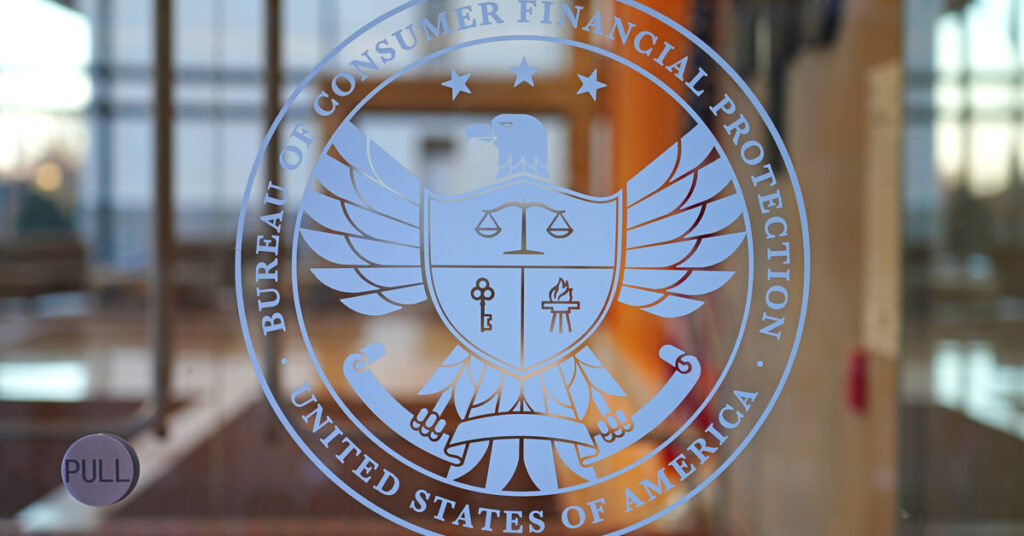A new report released by the Consumer Financial Protection Bureau (CFPB) confirmed some unsurprising but discouraging trends from 2022: Monthly mortgage payments grew, lenders denied more applicants and borrowers paid much more in various fees and costs.
Those were some of the biggest takeaways from this year’s version of the bureau’s annual study on residential mortgage lending activity and trends. Notable increases in interest rates, fees, discount points and other costs took a big bite out of affordability, leading to substantial declines in both applications and originations.
Specifically, total loan costs and fees rose 21.8% year over year in 2022, reaching $5,954 — the largest year-over-year jump since 2018. The spike in upfront costs only compounded the jump in monthly mortgage payments. The average monthly payment for a conforming 30-year fixed-rate mortgage (without taxes and insurance) leapt from $1,400 in December 2021 to $2,045 in December 2022, a 46.1% increase.
Significant upticks in the costs of borrowing led many to seek affordability at the onset in the form of discount points, which kept increasing in popularity. Some 50.2% of borrowers paid for discount points last year, more than any other year on record and up substantially from 2021, when 32.1% of buyers did so. The median borrower paid $2,370 for discount points in 2022.
CFPB director Rohit Chopra noted that the bureau suspects that the swell in fees is due in part to the increase in fees related to discount points. As more people opted to purchase points in an attempt to save on their monthly payments, collective costs naturally rose. He also lamented the impacts of rising mortgage rates on borrowers’ wallets. The median interest rate for a 30-year fixed-rate mortgage at the end of 2022 was 6.5%.
“We find that average monthly payments increased [more than] 46% and exceeded $2,000 per month,” Chopra said. “This is due almost entirely to the rate environment. This change was also accompanied by a substantial increase in income-based denials.”
Lenders denied applications due to insufficient income at the highest rate recorded since denials were first tracked and reported in 2018. Consider that in 2018, denials due to insufficient income constituted 40% of mortgage denials for each racial demographic. Last year, this figure had grown to 40% of white applicants, 45% of Black and Hispanic applicants, and 50% of Asian applicants.
The increase in rates also predictably led to the cratering of overall refinancing activity, which plunged 73.2% from 2021. Cash-out refis originated by independent lenders made up the majority of all refinances. Cash-out loans, which typically carry higher interest rates, higher monthly payments and higher balances, can increase foreclosure risk. But Chopra posited that many may be turning to them due to feeling “locked in” to their current homes or to cover nonhousing expenditures.
“It is possible that homeowners are finding it difficult to move and are using the proceeds from cash-out refinances for renovations and repairs,” he said. “However, some may be using these products to pay for higher education or other expenses unrelated to housing. Relatedly, we found an increase in home equity lines of credit.”
Unfortunately, with the interest rate environment remaining elevated as the Federal Reserve continues to combat rampant inflation, relief may not be fully in the cards in 2023.
“The significant changes in the rate environment in 2022 are having considerable impacts on the mortgage market. I expect these trends will continue in 2023 given further increases in average mortgage interest rates,” Chopra said.
With all the gloomy findings from last year likely to carry over, Chopra said that the CFPB will be diligent in making sure borrowers have a backstop in case their mortgages become a strain.
“In response, the CFPB will be devoting more attention to ensure that borrowers can sufficiently navigate alternatives to foreclosure when faced with financial distress,” he said. “For example, we are currently exploring some amendments to mortgage servicing standards.
“We will also continue to look for ways that the refinancing process can be simpler for borrowers, which will be particularly important if the rate environment becomes less restrictive.
“We see a growing need for borrowers to understand their options when it comes to tapping their home equity, as well as the factors they should consider when purchasing discount points. Finally, we will continue to work with federal and state law enforcement to ensure that mortgage market participants are adhering to appropriate consumer protection and fair lending laws.”







